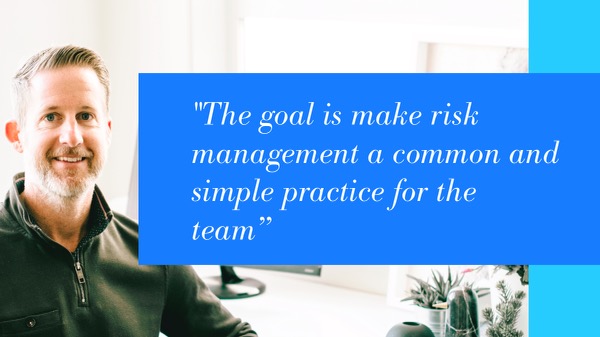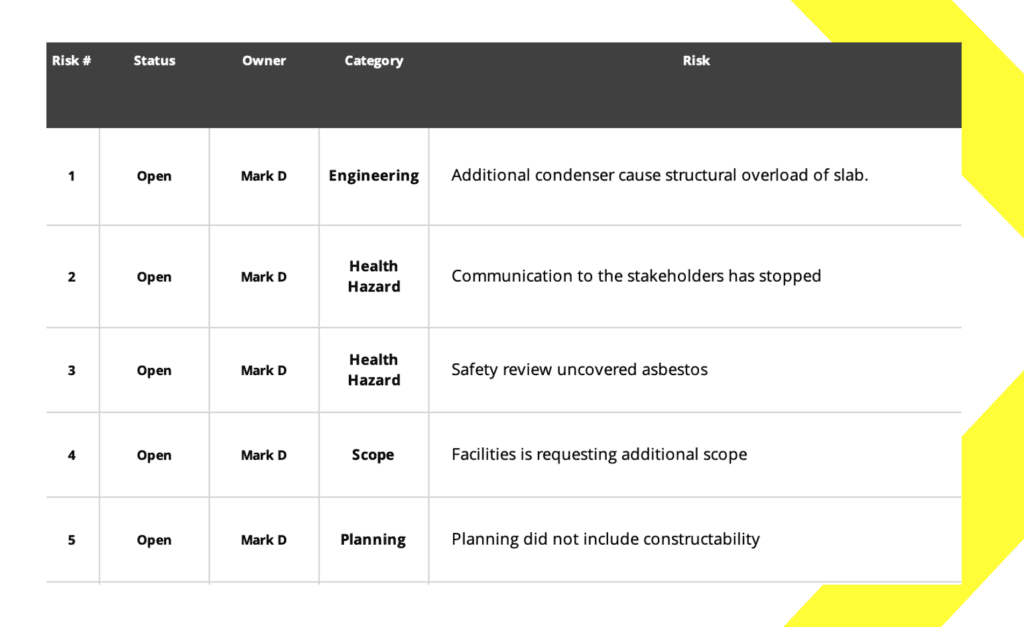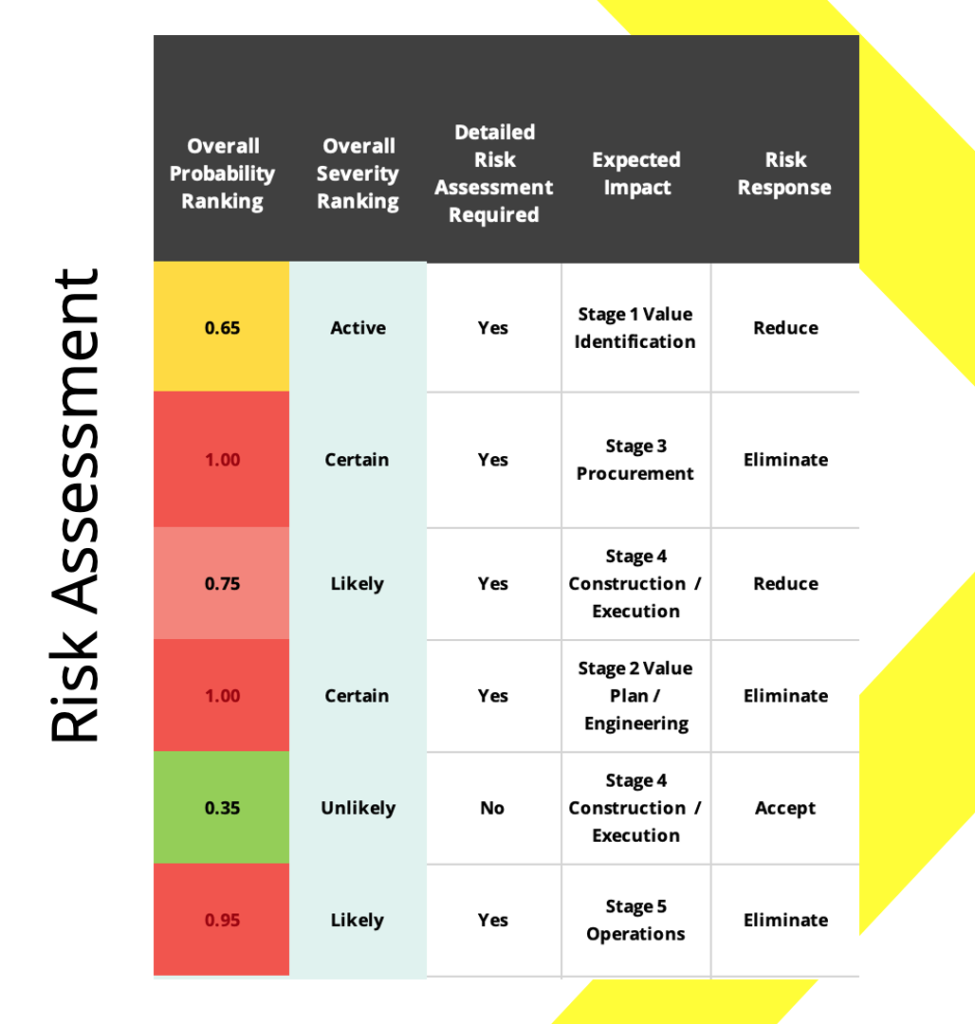Tips for Managing Project Risk
When should the risk management process begin? How should you go about doing it? Why is risk management important? Over my project management career, I pondered on how to handle risk and have crafted a few suggestions. Here are my top tips for managing project risk.
- Just start and the sooner the better.
- It’s an ongoing process, so don’t worry if you didn’t get everything on the first meeting.
- Make it easy for the team to participate in the risk management process.
- Create a genuine feeling of interested in risk management.
Why is risk management important?
Risk management is critical to projects as it helps minimize potential losses and maximize rewards. Enabling better decision making and ultimately better outcomes.
Risk management is an essential aspect of successful project management. It minimizes issues that arise thereby, ensuring consistent progress.
It’s impossible to accurately predict what lies ahead. As such, risk management planning provides a systematic way to identify and address potential risks and decrease the likelihood or effect of those risks. 1
If you fail to have an effective risk management strategy in place, it may result in an overall loss of value. Furthermore, if the process of evaluation is not conducted properly it can affect your understanding of the project objectives. With residual risk remaining unknown, there’s a potential for lack of transparency and communication within the team. As a result, it can be quite difficult to ensure everyone is on the same page. 2
When should the risk management process begin?
You just need to start taking the first step towards risk management by initiating the process now.
After understanding the scope of a project, I strongly recommend commencing the risk management process. This should be done at the commencement of a project or when the scope has been established.
It won’t take you long to get comfortable with the process of recognizing and handling potential issues. After some practice, it will become part of your regular work routine. Identifying and tackling problems is a critical step in making sure your projects go as smoothly as possible.

To get a better understanding of any potential risks that could affect the project, I like to look back at the experiences from previously completed projects. Presenting these learnings is a great way to initiate an effective risk management process for the team. By doing this, the team can grasp how risk management is integrated into the daily operations of the project.
Example of Similar Project Learning’s Taken from Database

How should one go about doing it?
Risk management should be treated as an ongoing process.
Risk management is an ongoing procedure that will need multiple revisions. Don’t be disheartened if you didn’t finish everything in the initial meeting. Remember, it’s just a discussion, you don’t want to add too much complexity to the risk register in the very beginning.
It’s essential to talk about risk management in positive terms and to stress the constructive role it plays within the team. You should incorporate the risk register into your regular workflow, allowing time and space for discussion and regular updating.
Risk Identification

As discussed above, I would like to start with the previous project’s learnings to help orient the team. Next is risk identification and having all the risks registered. This is a good way for the team to exchange knowledge and ideas. Finally, prioritizing risks and risk mitigation.
For a successful project, it is essential to go over the risk register thoroughly at the start and educate everyone on its contents. It’s a great chance to do an in-depth review and explain all sections of the risk register. Most people don’t understand its purpose, so it’s important that you take the time to guide them.
Make it easy for the team to participate in the risk management process.
Enable the whole team to involve themselves in the risk management process with ease.
Everyone possesses a unique understanding of risk management. The key is to make the entire process straightforward and fulfilling. To keep your staff members motivated, let them witness their successes by constantly showing them the progress they have made.
“Focus on the three most important risks. That way, I can ensure that the more pressing concerns are adequately addressed.“
After proactively taking measures to reduce risk and move the threat level from medium to low, it’s time for a moment of celebration for the success! Make sure to let the entire team know about this achievement and make sure they feel rewarded for their hard work. Seeing how far you have come is often a great motivator, and acknowledging everyone’s efforts helps reduce potential risk.

Create a genuine feeling of interest in risk management.
Spark a genuine curiosity about risk management and its importance for organizational success. Highlight the potential risks involved with failing to practice sound risk management principles.
The project manager needs to be passionate about the project for the team to put in their best efforts. If you show enthusiasm then everyone will follow suit.
If you perceive this to be a mundane task, the team might just go through the motions and not achieve the desired outcomes. It’s important to keep everyone engaged and interested by creating an enthusiasm for taking risks – this will guarantee successful outcomes in the exercise.
Establishing a proper risk register and maintaining it is essential. At times the process can be tedious. It should be your top priority to stay on top of things and update the risk register every day. Make sure that no details slip through the cracks by going over incoming emails or other relevant materials from team members.
Supporting regular risk update meetings, can help ensure a smooth running of operations. This will enable the team to have more confidence in achieving desired objectives.
Conclusion – Tips for Managing Project Risk
As a project manager, it is crucial for you to focus on risk management and its importance. Effective risk management depends on the attention and effort that you give it which in turn helps your team understand risks, prioritize them, and mitigate them.
When introducing new risks to the team, it’s important to observe how they react. You should try and set a pace that provides them with enough challenge and encourages participation without making them feel overwhelmed.
Every team member has a unique set of experiences. Considering everyones perspective is vital. Showing that you value their input and giving everyone fair chances to participate will make people more motivated, engaged and work towards having a successful project outcome. An effective project manager will be one who can help the team stay focused on winning.
Other Koncept blogs you may find interesting
Project Management Consulting Calgary – Project Manager Owner’s Representative
Project Management Consulting Calgary – Project Management Consulting Calgary
Financial and Budget Management – Overcoming Financial Project Delays
References:
1 and 2 – Lavanya, N. & Malarvizhi, T. (2008). Risk analysis and management: a vital key to effective project management. Paper presented at PMI® Global Congress 2008—Asia Pacific, Sydney, New South Wales, Australia. Newtown Square, PA: Project Management Institute.
